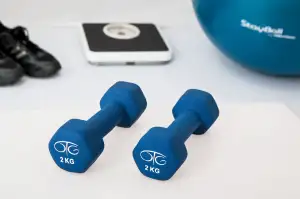Morpheus8 vs Vivace: A Comprehensive Comparison of Skin Treatment Methods

Morpheus8 and Vivace are cutting-edge skin treatments that utilize radiofrequency (RF) microneedling technology to rejuvenate the skin. Morpheus8 combines microneedling with RF energy to target deep layers of the skin, stimulating collagen production and improving skin texture. On the other hand, Vivace uses a similar approach but incorporates robotic precision for more controlled and precise treatment. Both treatments are minimally invasive and can address various skin concerns such as wrinkles, fine lines, acne scars, and uneven skin tone. These procedures are popular choices for individuals looking to achieve smoother, firmer, and more youthful-looking skin without undergoing surgery.
Differences in technology and mechanism of action
Morpheus8 and Vivace are both innovative skin treatments, but they differ in technology and mechanism of action. Morpheus8 utilizes radiofrequency (RF) energy combined with microneedling to target deep layers of the skin, stimulating collagen production for improved skin texture and firmness. On the other hand, Vivace incorporates RF energy with fractional microneedling to deliver heat into the dermis, promoting skin tightening and rejuvenation. While Morpheus8 focuses on collagen remodeling, Vivace emphasizes skin tightening through a combination of RF energy and microneedling.
Treatment areas and effectiveness
When it comes to treatment areas and effectiveness, Morpheus8 and Vivace both excel in rejuvenating the skin. Morpheus8 uses radiofrequency energy to target deeper layers of the skin, making it effective for treating areas like the face, neck, and body. It is particularly beneficial for improving skin texture, reducing wrinkles, and tightening loose skin. On the other hand, Vivace utilizes microneedling technology combined with radiofrequency energy to improve skin tone and texture. It is especially effective for addressing fine lines, acne scars, and enlarged pores on the face and neck. Overall, both treatments offer impressive results in enhancing skin quality and appearance.
Downtime and recovery period
Downtime and recovery period are important considerations when choosing between Morpheus8 and Vivace skin treatments. Morpheus8 typically requires minimal downtime, with most patients able to resume their daily activities immediately after treatment. However, redness and swelling may occur for a few days post-procedure. On the other hand, Vivace may have a slightly longer recovery period due to potential pinpoint bleeding and redness that can last up to 24 hours. Patients are advised to avoid direct sun exposure and strenuous activities for a few days following both treatments to optimize results and minimize any potential side effects.
Cost comparison
When considering Morpheus8 vs. Vivace skin treatments, cost is an important factor to take into account. The price of each session can vary depending on the clinic, location, and specific treatment plan. On average, Morpheus8 sessions typically range from $800 to $1,500 per session, while Vivace treatments generally fall within the range of $1,200 to $1,800 per session. It's essential to note that multiple sessions may be required for optimal results with both treatments, so the total cost can add up over time. Patients should consult with their dermatologist or skincare specialist to discuss pricing options and determine the best treatment plan that fits their budget and desired outcomes.
Potential side effects and risks
Potential side effects and risks associated with Morpheus8 and Vivace skin treatments are generally mild and temporary. Common side effects may include redness, swelling, or bruising at the treatment site, which typically subside within a few days. In rare cases, patients may experience temporary changes in skin pigmentation or texture. It is important to follow post-treatment care instructions to minimize these risks. As with any cosmetic procedure, there is a small risk of infection or scarring, although this is uncommon when performed by a skilled professional. It is recommended to discuss any concerns with your healthcare provider before undergoing either treatment.
Patient satisfaction and long-term results
Patient satisfaction and long-term results are crucial factors when considering skin treatment options like Morpheus8 and Vivace. Studies have shown high patient satisfaction rates with both treatments, reporting improvements in skin texture, tone, and overall appearance. Long-term results vary but can last up to a year or more with proper skincare maintenance. Regular follow-up treatments may be recommended to maintain optimal results over time. It is essential for patients to communicate their goals and expectations with their providers to achieve the best outcomes.
In conclusion, both Morpheus8 and Vivace are innovative skin treatments that offer impressive results in skin rejuvenation and tightening. When deciding between the two, it is essential to consider your specific concerns and desired outcomes.
If you are looking for a treatment that targets deeper layers of the skin with minimal downtime and discomfort, Morpheus8 may be the ideal choice for you. On the other hand, if you prefer a treatment that combines microneedling with radiofrequency technology for overall skin improvement, Vivace could be more suitable.
Ultimately, consulting with a qualified dermatologist or skincare professional is crucial in determining which treatment aligns best with your goals and expectations. By understanding the differences in technology, treatment areas, downtime, cost, potential side effects, and long-term results of Morpheus8 and Vivace, you can make an informed decision to achieve radiant and youthful-looking skin.
Published: 21. 03. 2024
Category: Health



